This is the seventh in a series of posts about the Voigtlander 65 mm f/2 Apo-Lanthar macro lens. The series starts here.
I’ve been asked about the Voigtlander 65 mm f/2 Apo-Lanthar’s longitudinal chromatic aberration (LoCA) and focus shift at 1:2 reproduction ratio. I made a series of exposures at each whole f-stop from f/2 through f/11, using a motorized rail and this protocol:
- Sony a7RII
- Double-edged razor blade backlit with Wescott LED panels aimed at white diffuser
- ISO 100
- Manual exposure
- Manual focus, set at one position
- Cognisys computer-driven focusing rail
- 100 exposures 10 um apart
- Lens distance set at 1:2 magnification mark
- Document mode decoding with DCRAW
- MTF50s for all the raw color planes calculated using MTF Mapper
- Graphing in Excel
Here’s a picture of the test setup:
The camera and rail are on the right. The razor blade is mounted on the tripod in front of the camera. The two Wescott lights are on the light stands. The white diffuser, the back of a C-sized sheet of Epson Legacy Baryta, is taped to the door.
Here are the results at f/2 (I apologize for getting the captions wrong again. It’s a 65 mm lens, not a 60 mm one):
Distance in cm is plotted as the horizontal axis, with the left-hand size having the subject further from the camera than the right-hand side (The camera moves closer to the subject by 10 um after each exposure). The vertical axis is MTF50 in cycles per picture height (cy/ph), which is a good proxy for sharpness.
The first thing to notice is how sharp this lens is wide open. The red and green peaks are about 1600 cy/ph, which is very sharp indeed. However, we have lost some sharpness, especially in the blue channel, over the 1:10 case, which looked like this:
There is little LoCA, which presents as the difference measured horizontally in the peaks of the three color channels. There is even less LoCA than in the 1:10 case.
At f/2.8:
Compare that to 1:10:
Sharpness suffers a bit by comparison, but LoCA is still better. The apertures in both cases are the ones indicated on the lens. At 1:2, the effective aperture of the Apo-Lanthar will be almost a stop narrower than that at 1:10, and thus there will be more diffraction degradation. The scale of the horizontal axes are different because there is much less DOF at 1:2 than 1:10.
Now f/4:
At 1:10, it looks like this:
Not as sharp, but better LoCA, just like before.
F/5.6:
At 1:10:
Same pattern.
If we look at f/8 at 1:10 which ought to have about the same amount of diffraction, we can see that the MTF50 curves are pretty close to the same:
Back to 1:2 at f/8:
F/11:
Now let’s plot the green channel curves for all the above apertures on one graph so we can get an idea of the amount of focus shift as you stop down:
Again, this is an excellent performance. F/2.8 is the sharpest aperture, as is was at 1:10. Focus shift is about the same as in that case, too:
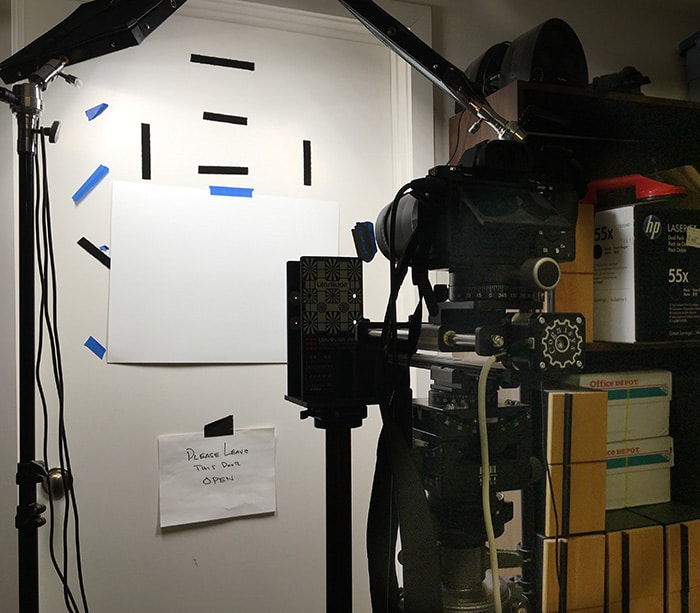
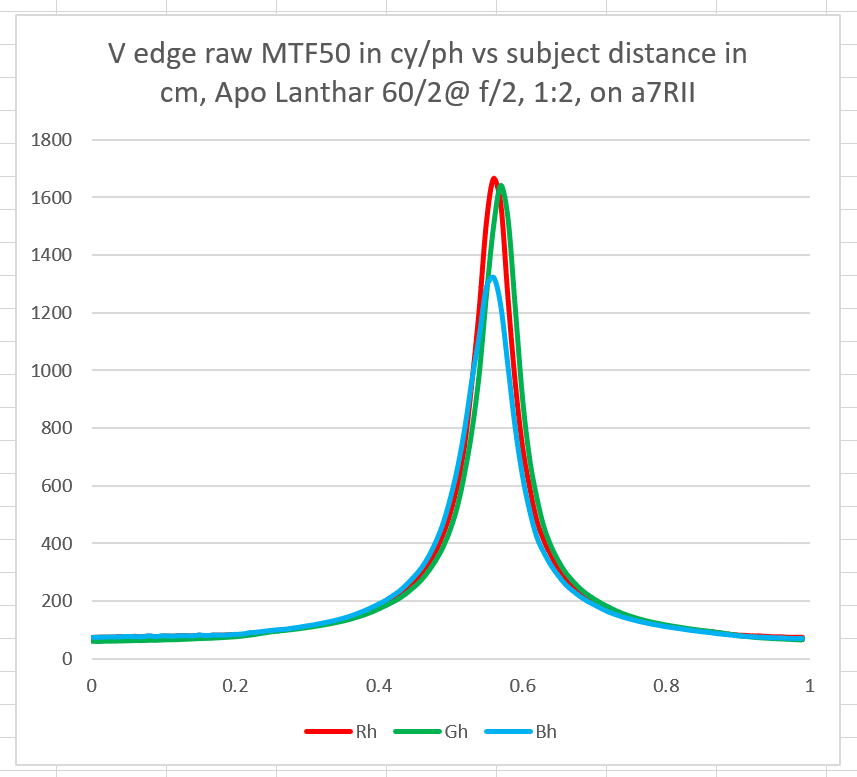

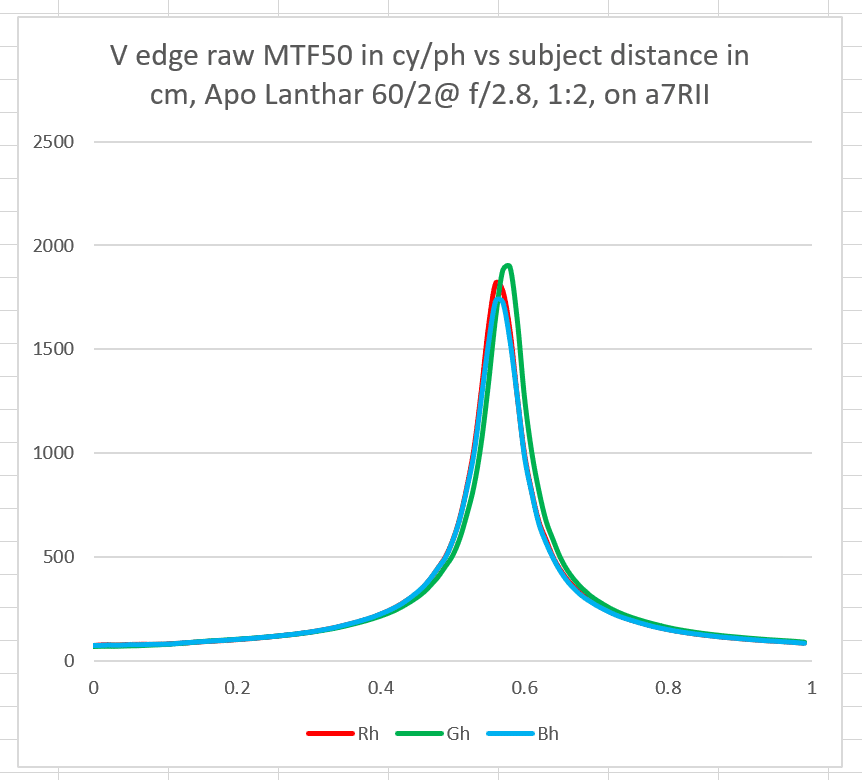
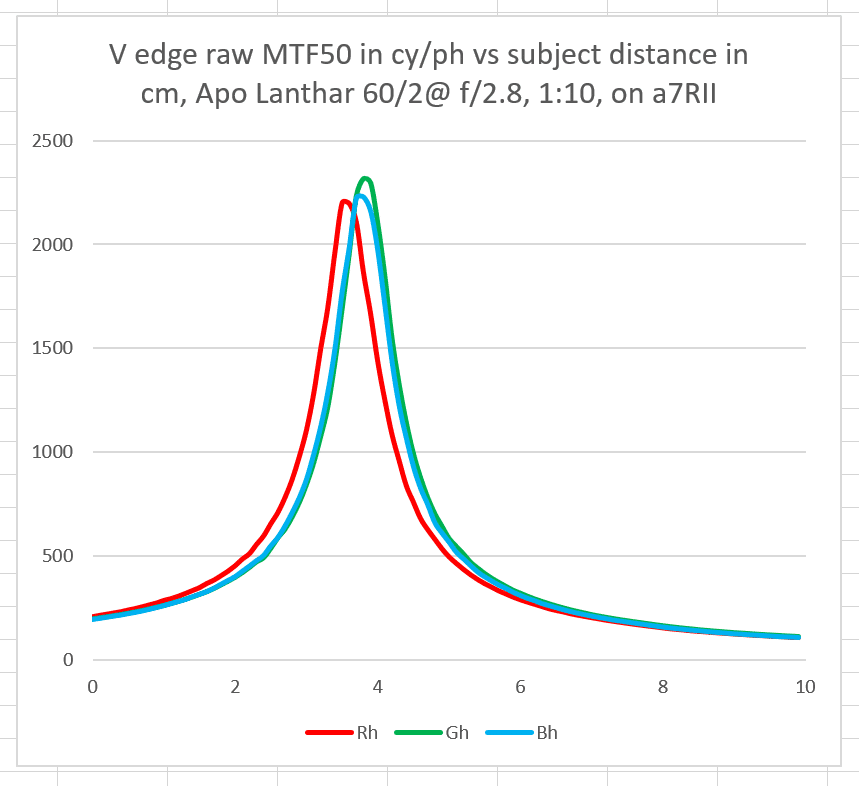
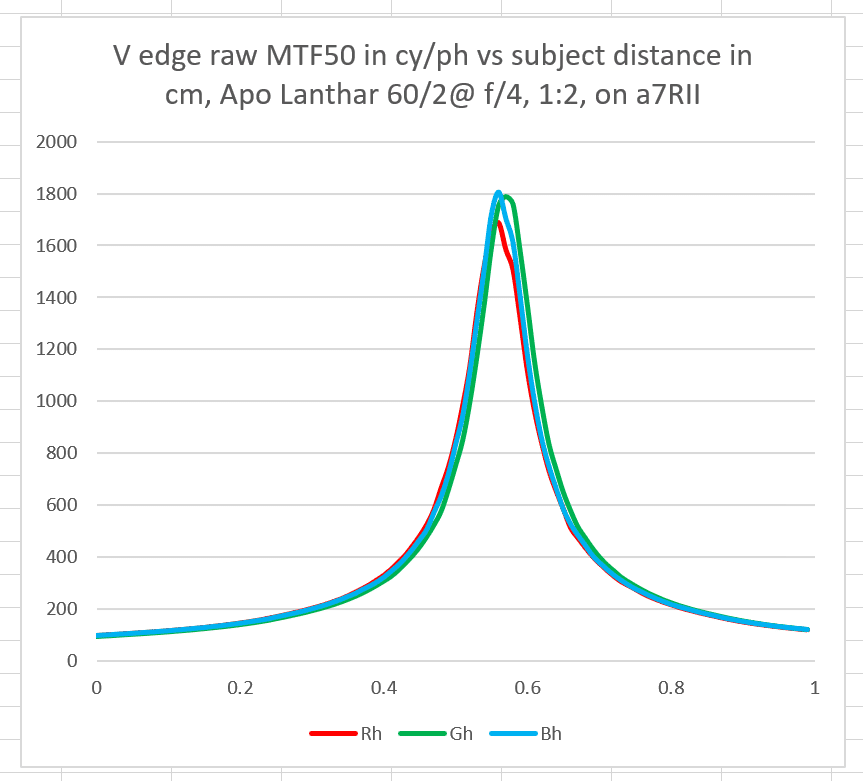
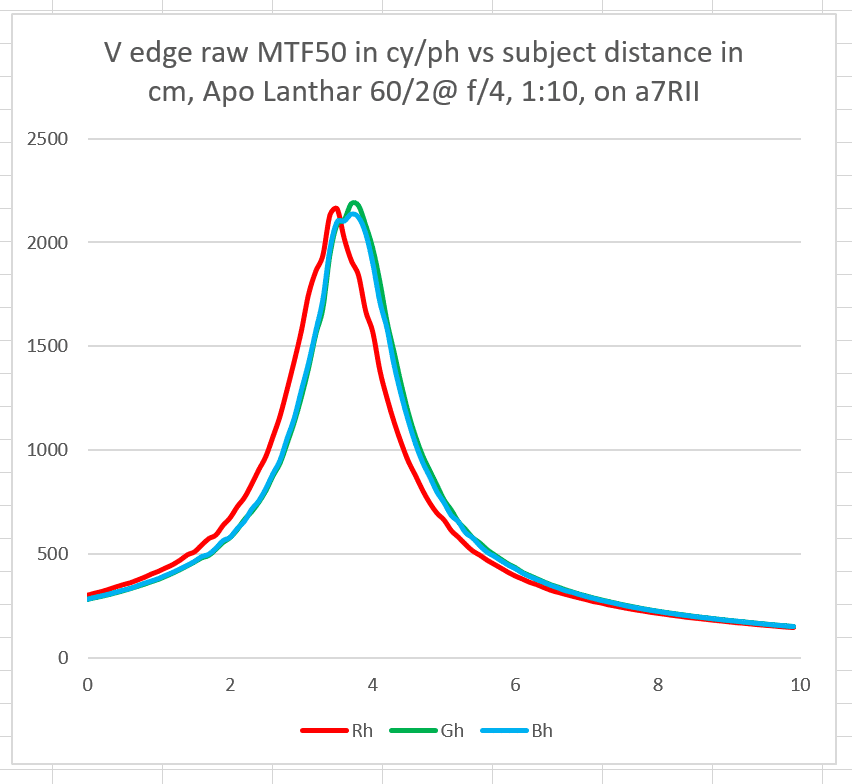
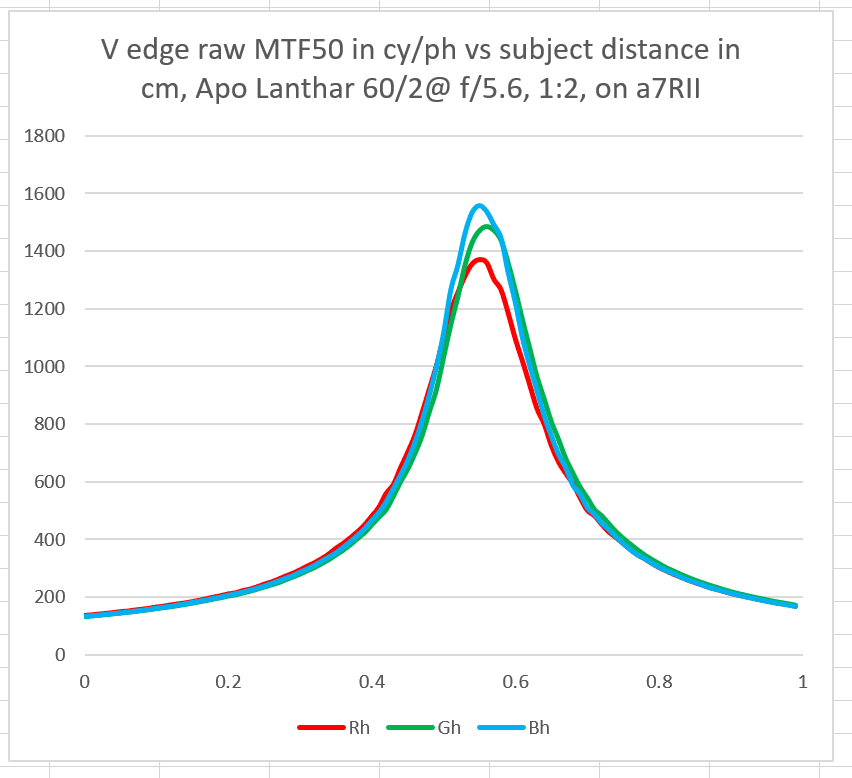
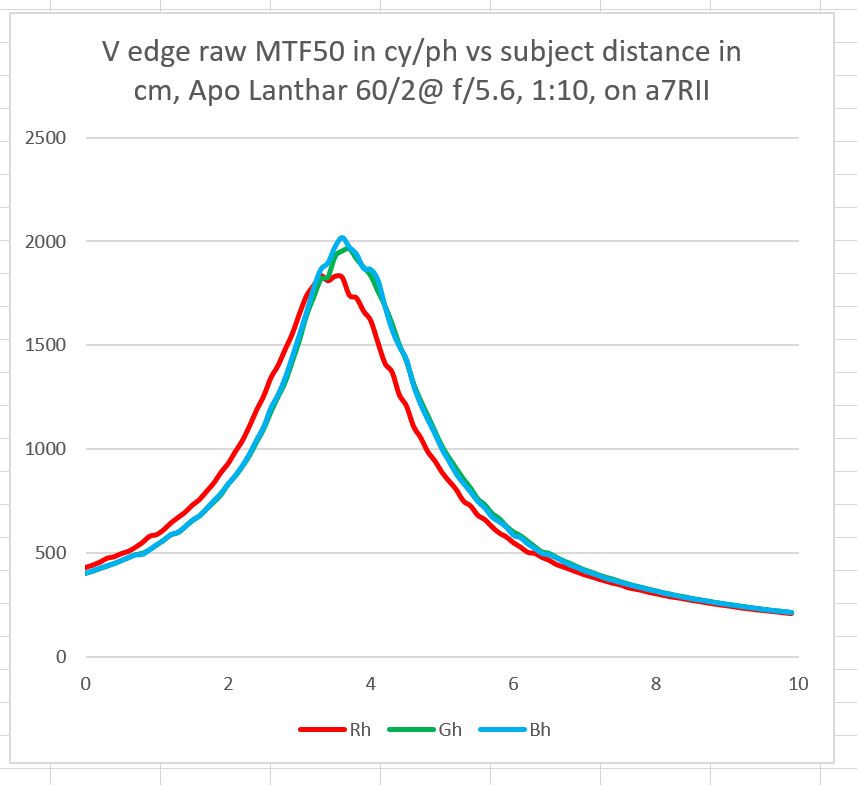
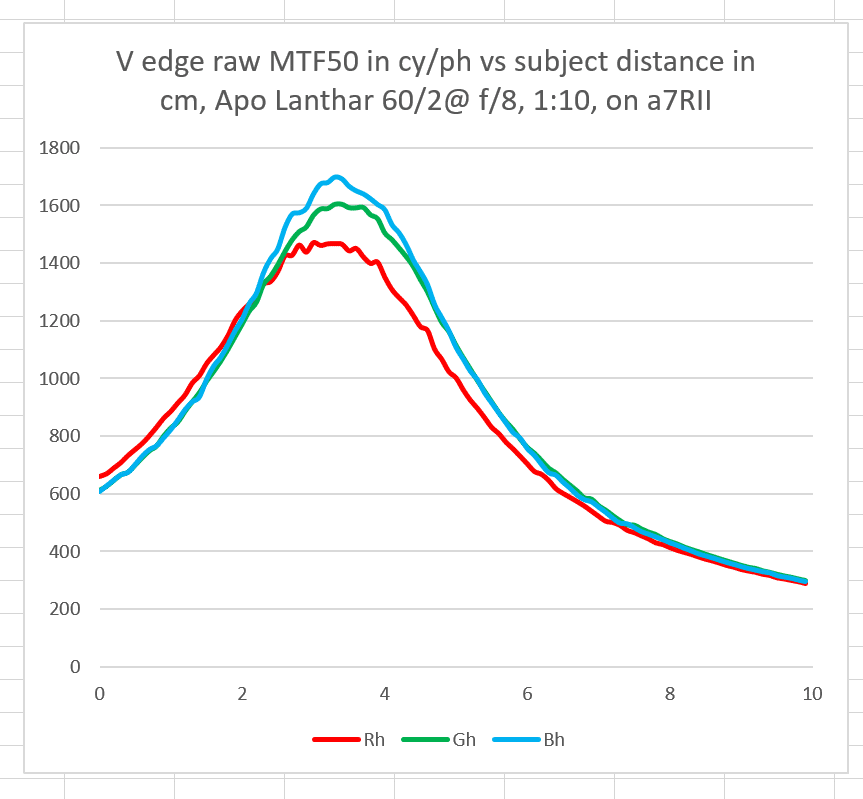

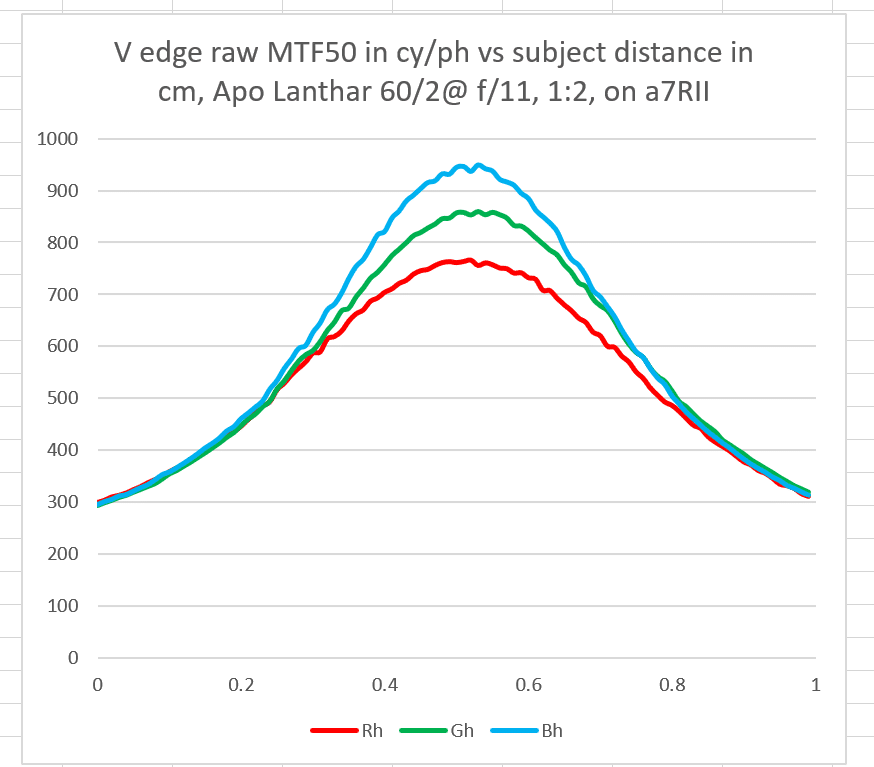
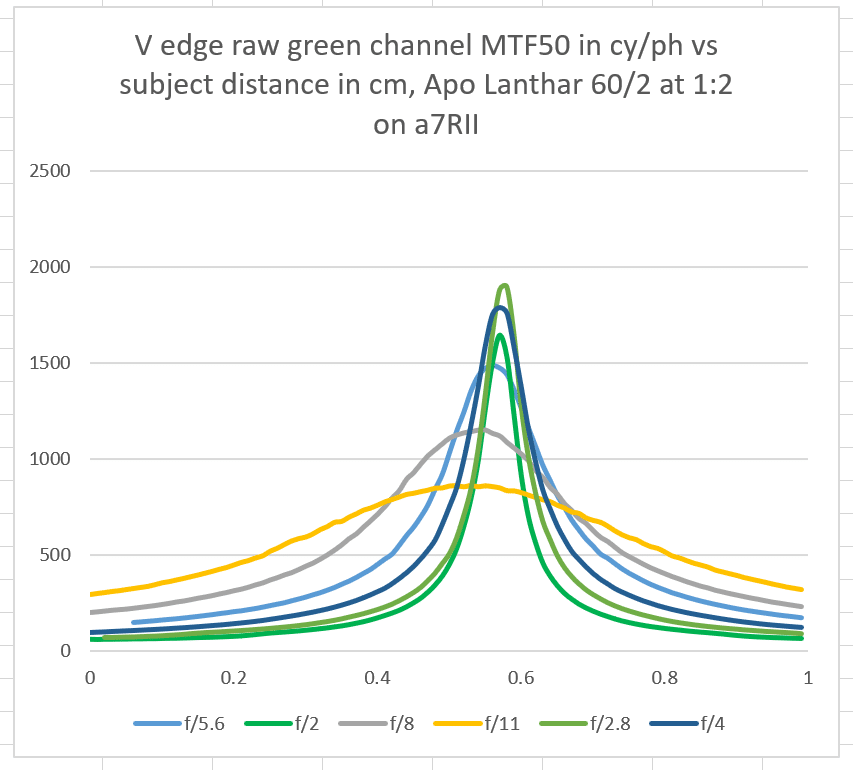
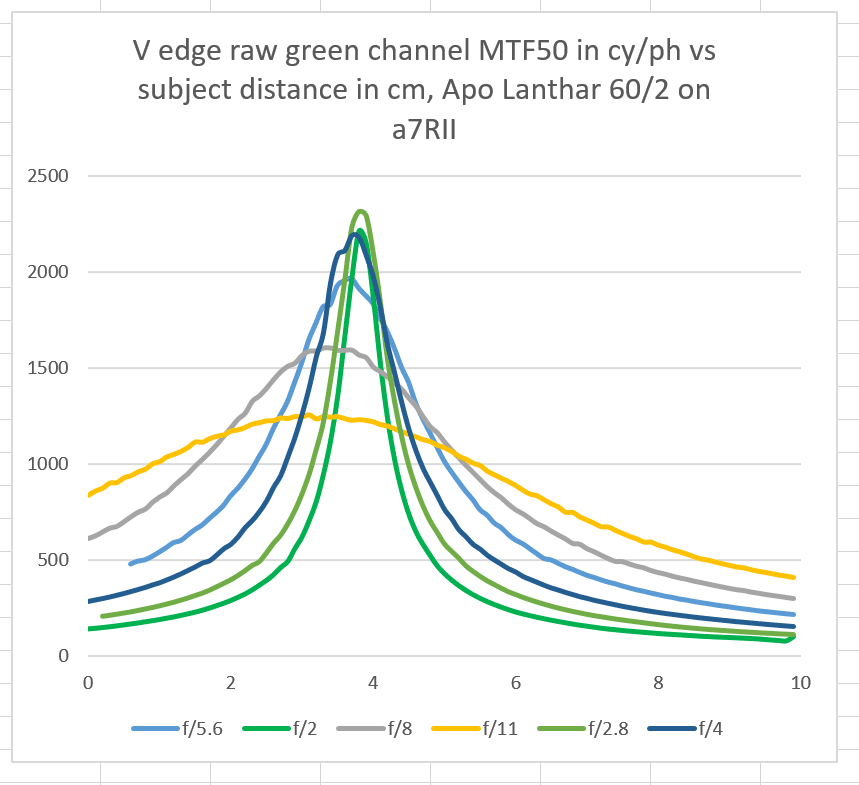
[…] this test, we know that f/2.8 is the sharpest aperture at 1:2 on-axis. So I’ll start at f/2.8, with […]